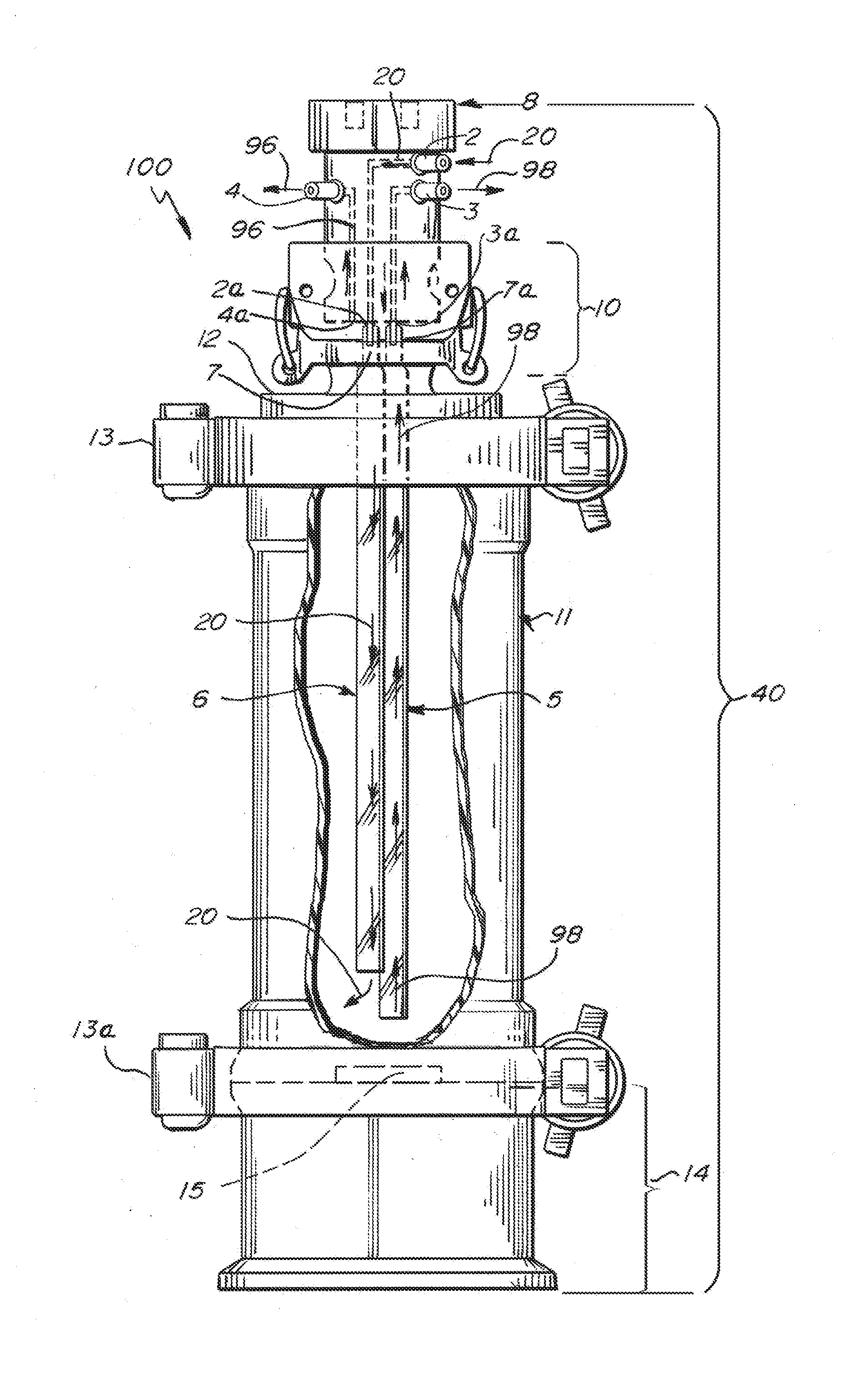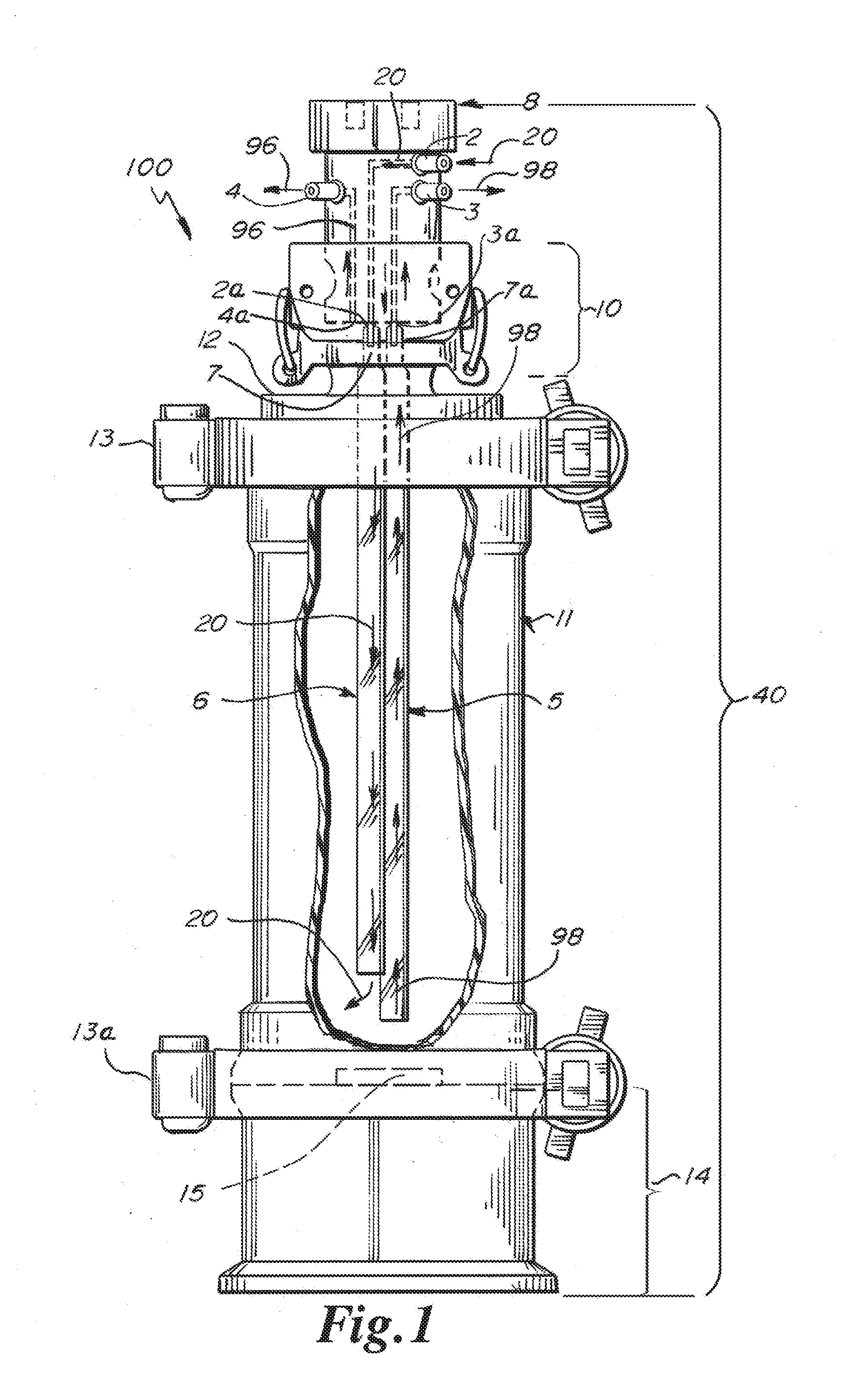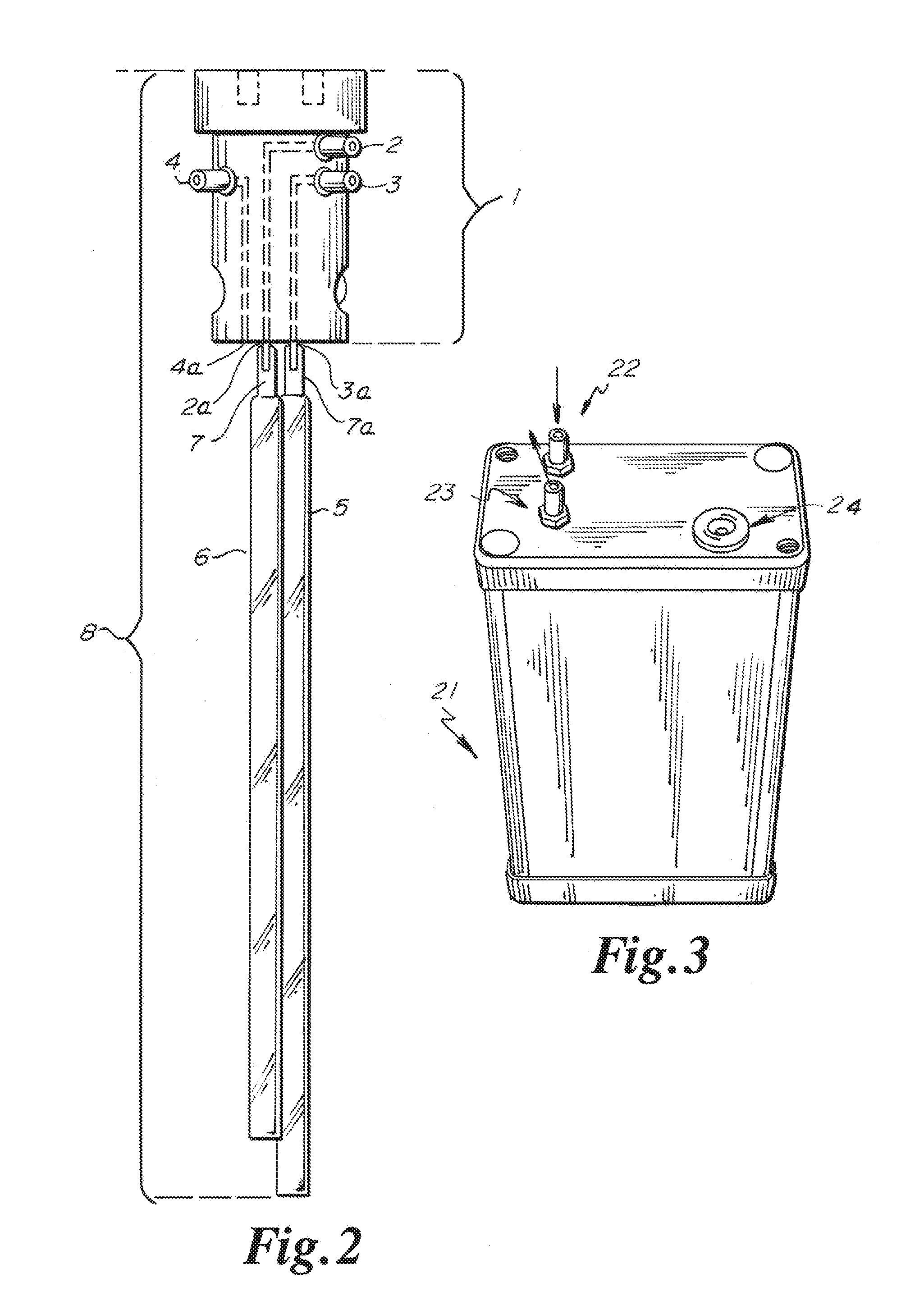Device and system to improve asepsis in dental apparatus
a technology for asepsis and dental equipment, applied in the direction of dental surgery, specific water treatment objectives, treatment water, etc., can solve the problems of increased bacterial colonization rate, contaminated dental waterlines may pose a public health risk, and may also be contaminated with bacteria or viral pathogens
- Summary
- Abstract
- Description
- Claims
- Application Information
AI Technical Summary
Benefits of technology
Problems solved by technology
Method used
Image
Examples
Embodiment Construction
[0056]The device and system to improve asepsis in dental apparatus is disclosed herein. In general, the device and system to improve asepsis in dental apparatus is indicated by the numeral 100.
[0057]In general, referring to FIG. 1, in at least one embodiment, the device and system to improve asepsis in dental apparatus 100 includes a self-contained water delivery apparatus 40 which includes a reservoir 11 made of an FDA compliant medical grade ultraviolet (UV) resistant polymer and a removable UVC light emitting diode (LED) light emitting unit 14, emitting light having an approximate wavelength of between 270 nm to 280 nm. In some embodiments, the reservoir egress connection assembly 8 provides fixed mounting within or near the dental delivery unit (not shown). In some embodiments, reservoir 11 is partially transparent, translucent, or is transparent and is formed of a material other than FDA compliant medical grade ultraviolet (UV) resistant polymer. In some embodiments, reservoir ...
PUM
| Property | Measurement | Unit |
|---|---|---|
| wavelength | aaaaa | aaaaa |
| wavelength | aaaaa | aaaaa |
| time | aaaaa | aaaaa |
Abstract
Description
Claims
Application Information
 Login to View More
Login to View More - R&D
- Intellectual Property
- Life Sciences
- Materials
- Tech Scout
- Unparalleled Data Quality
- Higher Quality Content
- 60% Fewer Hallucinations
Browse by: Latest US Patents, China's latest patents, Technical Efficacy Thesaurus, Application Domain, Technology Topic, Popular Technical Reports.
© 2025 PatSnap. All rights reserved.Legal|Privacy policy|Modern Slavery Act Transparency Statement|Sitemap|About US| Contact US: help@patsnap.com



